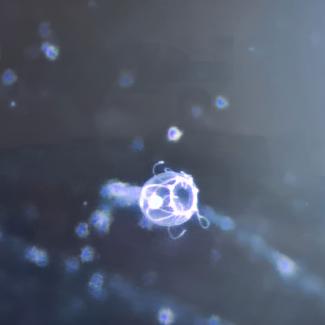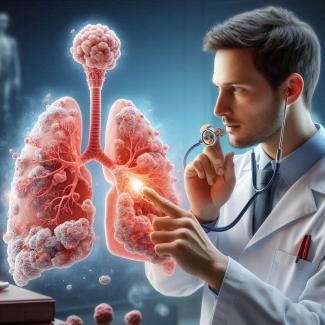
Turritopsis dohrnii, a species of jellyfish, is renowned for its remarkable ability to reverse its life cycle. This jellyfish, often referred to as the "immortal jellyfish," exhibits a biological process that enables it to revert to a juvenile stage after reaching maturity, thus potentially escaping death and achieving a form of biological immortality.
Life Cycle of Turritopsis dohrnii
- Egg Stage: The life cycle of Turritopsis dohrnii begins with the fertilization of eggs. These eggs develop into planktonic larvae known as planulae.
- Polyp Stage: The planulae settle on a substrate and metamorphose into polyps. Polyps are sessile, small, and cylindrical forms that can reproduce asexually through budding, producing multiple medusae.
- Strobilation and Medusa Formation: When environmental conditions are favorable, polyps undergo a process called strobilation. During strobilation, the polyp forms a series of segments that eventually detach as juvenile medusae.
- Adult Medusa Stage: The detached juvenile medusae mature into adult jellyfish, capable of sexual reproduction. The adult stage is characterized by its free-swimming behavior and reproductive capabilities.
- Reversion through Transdifferentiation: In response to stress, injury, or other adverse conditions, Turritopsis dohrnii can revert to its polyp stage through a process known as transdifferentiation. During this phase, the mature medusa undergoes a cellular transformation that allows it to assume a juvenile polyp form.
Mechanisms of Reversion
Transdifferentiation is a rare and complex biological process where one type of mature cell transforms into another type of mature cell without first reverting to a stem cell state. In the case of Turritopsis dohrnii, the mature medusa cells transform back into polyp cells, effectively allowing the jellyfish to bypass death and restart its life cycle.
Key Features of Transdifferentiation:
- Cellular Plasticity: The ability of mature cells to change into different types of cells.
- Reversible Aging: The reversion process allows the organism to bypass the typical aging process and return to an earlier developmental stage.
- Genetic Regulation: Genes involved in cellular differentiation and development are reactivated or modulated during reversion.
Research and Rejuvenation Studies
Global Research Centers
Research into the life cycle reversal of Turritopsis dohrnii and its applications for cell rejuvenation is conducted worldwide. Key research centers include:
- United States:
- Harvard University: Researchers are studying the genetic and molecular mechanisms behind transdifferentiation.
- Stanford University: Focus on the cellular and developmental biology aspects of the jellyfish's life cycle.
- Europe:
- Max Planck Institute (Germany): Investigates the cellular and genetic basis of rejuvenation processes.
- CNRS (France): Conducts studies on the mechanisms of cellular plasticity and their applications.
- Asia:
- University of Tokyo (Japan): Researches the biochemical and genetic factors involved in the jellyfish's ability to reverse its life cycle.
- Peking University (China): Focuses on applying findings from Turritopsis dohrnii to regenerative medicine.
Transfer to Human Cells
Efforts are underway to explore how the rejuvenation mechanisms of Turritopsis dohrnii can be applied to human cells:
- Genetic Engineering: Scientists use tools like CRISPR-Cas9 to insert genes from Turritopsis dohrnii into human cells, aiming to induce similar rejuvenation processes.
- Stem Cell Research: Researchers investigate how the principles of transdifferentiation can be applied to human stem cells to promote cellular regeneration and repair.
- Pharmacological Approaches: Development of drugs or compounds that mimic the effects of transdifferentiation to promote cellular rejuvenation in humans.
Potential Impact on the Human Body
The potential impact of successful cell rejuvenation on the human body is profound:
- Aging and Longevity: Rejuvenating human cells could slow down or reverse the aging process, potentially extending lifespan and improving the quality of life in old age.
- Cellular Regeneration: Enhanced regenerative abilities could lead to improved recovery from injuries and better management of degenerative diseases.
- Disease Prevention: Rejuvenation technologies could help prevent or treat age-related diseases such as Alzheimer's disease, cardiovascular conditions, and osteoarthritis.
- Ethical and Safety Concerns: The pursuit of cellular rejuvenation raises ethical and safety issues, including the potential for unintended consequences and long-term effects.
Current State of Research
Research into cell rejuvenation inspired by Turritopsis dohrnii is in various stages:
- Basic Research: Fundamental studies focus on understanding the molecular and genetic mechanisms of transdifferentiation.
- Preclinical Studies: Experimental work involves testing rejuvenation techniques in animal models and in vitro systems.
- Clinical Trials: Some approaches are entering early-phase clinical trials to assess their safety and efficacy in humans.
Related Research and Innovations
Several areas of research are similar to the study of Turritopsis dohrnii and its rejuvenation capabilities:
- Telomere Biology: Research into telomerase and telomere length aims to understand and potentially reverse cellular aging.
- Epigenetics: Studies explore how epigenetic modifications influence aging and how these changes can be reversed.
- Regenerative Medicine: Ongoing research into stem cells and tissue engineering focuses on developing therapies for tissue repair and regeneration.
- Biological Reprogramming: Techniques such as induced pluripotent stem cells (iPSCs) involve reprogramming mature cells back to a pluripotent state, offering insights into rejuvenation.
The study of Turritopsis dohrnii and its life cycle reversal presents an exciting frontier in biological research with significant potential for human medicine. While progress is being made in understanding and applying these mechanisms, there is still much to learn and develop. The integration of this knowledge into practical therapies could revolutionize how we approach aging, disease, and regenerative medicine. As research advances, it will be crucial to address the ethical and safety considerations associated with these groundbreaking technologies.






